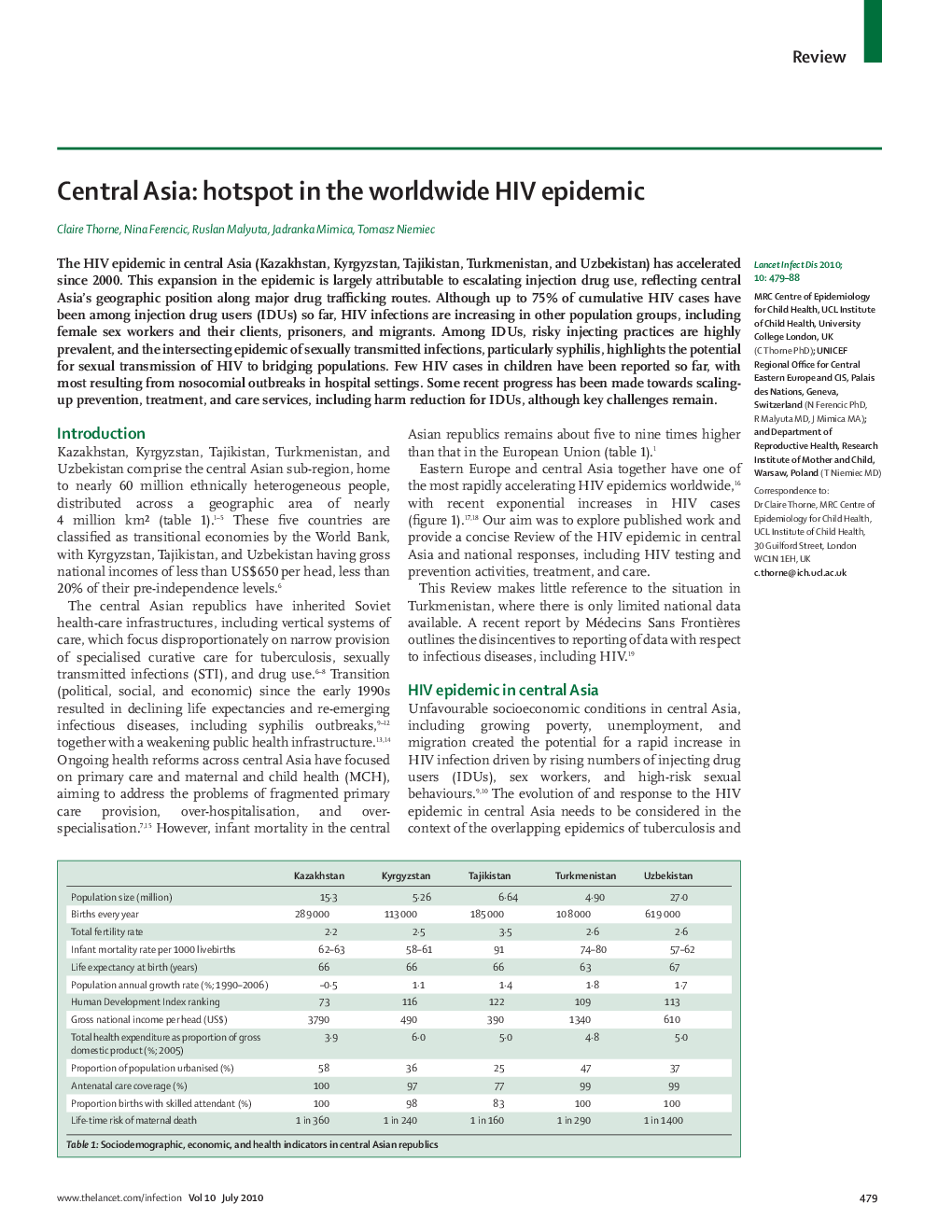| Article ID | Journal | Published Year | Pages | File Type |
|---|---|---|---|---|
| 3410876 | The Lancet Infectious Diseases | 2010 | 10 Pages |
SummaryThe HIV epidemic in central Asia (Kazakhstan, Kyrgyzstan, Tajikistan, Turkmenistan, and Uzbekistan) has accelerated since 2000. This expansion in the epidemic is largely attributable to escalating injection drug use, reflecting central Asia's geographic position along major drug trafficking routes. Although up to 75% of cumulative HIV cases have been among injection drug users (IDUs) so far, HIV infections are increasing in other population groups, including female sex workers and their clients, prisoners, and migrants. Among IDUs, risky injecting practices are highly prevalent, and the intersecting epidemic of sexually transmitted infections, particularly syphilis, highlights the potential for sexual transmission of HIV to bridging populations. Few HIV cases in children have been reported so far, with most resulting from nosocomial outbreaks in hospital settings. Some recent progress has been made towards scaling-up prevention, treatment, and care services, including harm reduction for IDUs, although key challenges remain.
